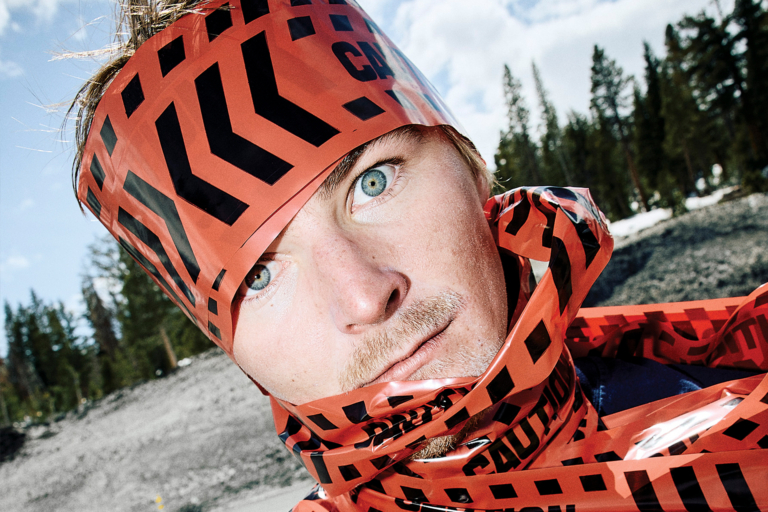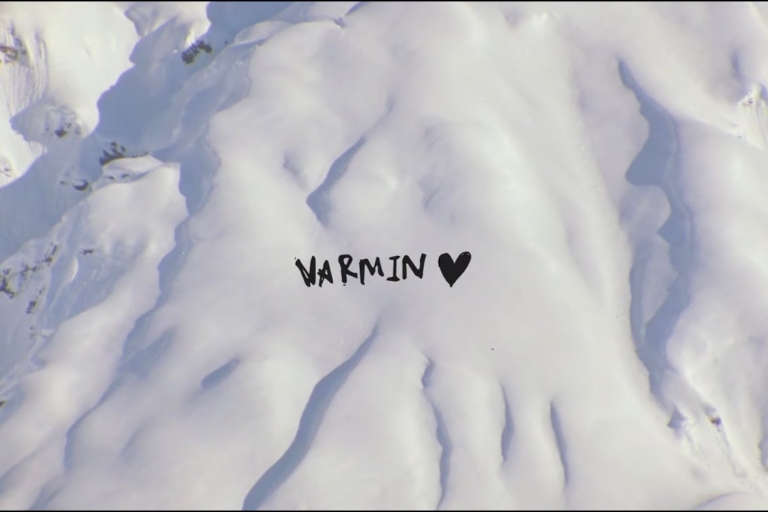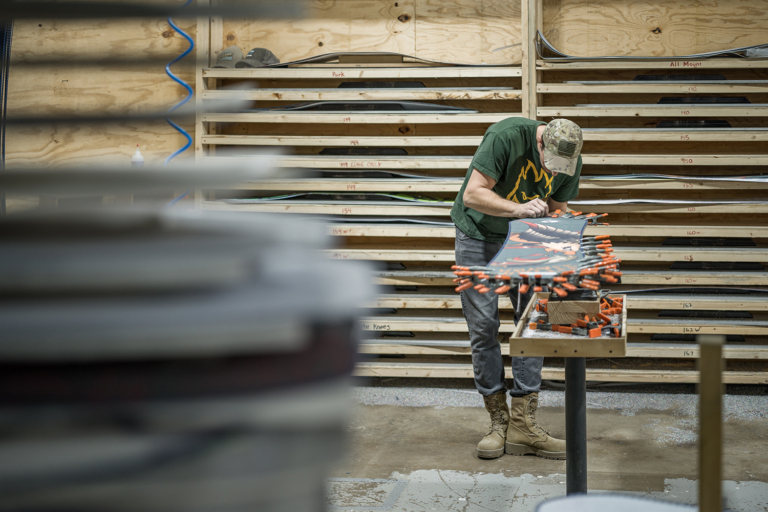[vc_row][vc_column][vc_column_text]You know all of those massive pristine jumps, halfpipes, boxes and rails that the pros fearlessly boost into during the snowboarding competitions you see on TV? Snow Park Technologies (SPT) is the company behind creating those colossal features.
The staff is a hard-working crew of masterminds. They shape the world-class parks you see at Winter X Games, the Burton U.S. Open, Winter Dew Tour in Breckenridge, Peace Park, and more. To date, they’ve crafted over 250 parks in the 20+ years they’ve been in business.
We caught up with Elliot Cone at SPT to ask him about everything that goes into making those perfectly angled lips and landings that stoke riders out year after year.
All photography by: Sam Aiken and Tom Zikas.[/vc_column_text][/vc_column][/vc_row][vc_row][vc_column][vc_single_image image=”74898″ img_size=”full” alignment=”center”][/vc_column][/vc_row][vc_row][vc_column][vc_column_text]How long you’ve been with SPT, and what’s your current role?
I started contracting with Snow Park in 2000 when I did the Sims World Champions, and I’ve been a full-time employee since ‘07.
I’m Project Manager for the Dew Tour for adaptive, halfpipe, and slopestyle. At X Games, I’m Project Manager just for slopestyle. And at the U.S. Open, I’m Project Manager for halfpipe and slopestyle.
What were you doing before you were at Snow Park Technologies?
I was head builder at Breckenridge from ‘95-‘07 for Breck terrain parks, and I was the Keystone Park Manager form ‘04-’07.
How many people are on your team?
At Dew Tour, I had seven guys. At the X Games [in Aspen, where SPT is currently], I have five guys specifically for the slopestyle course, plus many more for the other courses. But our team is much larger than that. At the U.S. Open, I have six people. And then we use some staff from Vail, Breckenridge, and Aspen. We collaborate a lot.[/vc_column_text][/vc_column][/vc_row][vc_row full_width=”stretch_row_content_no_spaces”][vc_column][vc_single_image image=”74861″ img_size=”full” alignment=”center”][/vc_column][/vc_row][vc_row][vc_column width=”2/12″][vc_custom_heading text=”“We adapt as the snow presents itself.“” font_container=”tag:h2|font_size:30|text_align:right|color:%23dd3333″ use_theme_fonts=”yes”][/vc_column][vc_column width=”8/12″][vc_column_text]Could you speak to some of the challenges that come with building these parks?
The biggest challenge we have is the amount of product [snow] we have to work with, and the timeframe we have to push that product around. Mother Nature doesn’t help us out much.
For instance, this year at Dew Tour, only a resort like Breckenridge could have pulled that off in that timeframe. Breckenridge has so much snowmaking power, they were able to make snow for an entire slopestyle course in four or five days. Then the timeframe became really crunched, we had the product, and we worked on it all the way until one o’clock on Sunday [the day before the event]. Fortunately, we didn’t have many changes after the test went down, and we were able to open it up for Monday.
What else do you do to prepare for those scenarios?
We have contingency plans that we lay out. We had pitched a 1,200-foot adaptive course, a seven-feature slopestyle course, and a 600-foot halfpipe [for Dew Tour]. We had three contingency plans laid out, whereas one could have been a 600-foot adaptive, a five-feature slopestyle course, and a 475-foot halfpipe.
Nobody wanted to go that route, so we were holding our breath until we had the vote and decided to build the full seven-feature course. We do a lot of planning for those contingencies. We adapt as the snow presents itself.[/vc_column_text][/vc_column][vc_column width=”2/12″][/vc_column][/vc_row][vc_row full_width=”stretch_row_content_no_spaces”][vc_column][vc_single_image image=”74862″ img_size=”full” alignment=”center”][/vc_column][/vc_row][vc_row][vc_column width=”2/12″][/vc_column][vc_column width=”8/12″][vc_column_text]What kind of computer technology do you use?
The computer model that we typically use is SketchUp [a 3D modeling computer program]. SketchUp allows us to show what alternative plans could be. It’s a great tool. We’ll present every one of those scenarios [park designs] in a SketchUp form, so everyone from Dew Tour and Breckenridge can see what we’re thinking about for possible options.
Are there physics involved in working with SketchUp? For example, if the rider is hitting the jump at X speed, you need the transition to be X-feet long.
A lot of it comes with experience. We’ve built these features for so many years, we’ve just learned from our mistakes.
When I build a jump in a SketchUp model, I take account the size it should be for Dew Tour, its location at Breckenridge, and the amount of snow we’ve asked for. We put a lot of thought into those models. The jibs are to scale. The pads are to scale. Everybody uses the model as a reference to the physical size when they build.[/vc_column_text][/vc_column][vc_column width=”2/12″][vc_custom_heading text=”“We’ve built these features for so many years, we’ve just learned from our mistakes.“” font_container=”tag:h2|font_size:30|text_align:left|color:%23dd3333″ use_theme_fonts=”yes”][/vc_column][/vc_row][vc_row][vc_column][cq_vc_mediumgallery images=”74870,74871,74872,74873″ layoutno=”22″][/vc_column][/vc_row][vc_row][vc_column width=”2/12″][vc_custom_heading text=”“The best inspiration for all of us is boredom.“” font_container=”tag:h2|font_size:30|text_align:right|color:%23dd3333″ use_theme_fonts=”yes”][/vc_column][vc_column width=”8/12″][vc_column_text]Right. And since you guys have been doing it for so long, you can work off the format of what’s worked in the past.
Correct. And we work really closely with the athletes too. So as trends change, we’re following the athletes and what those trends are. They tend to expect to see something that they’re used to seeing. At an event, we’re typically not trying to bring a feature that nobody has seen before because then it becomes a challenge just to use the feature versus something they can showcase their skills on.
In addition to working with the athletes, how else does Snow Park Technologies find inspiration for park designs?
The best inspiration for all of us is boredom. None of us want to build the same thing over and over again, then it becomes a real job. So we find inspiration through following these guys on Instagram, watching them shred, and going to all the parks we can.
The SketchUp is powerful for creativity. We know what the cat can do, we know what the transition cutters can do, and we can play with both in the model.
When we take it to an event, like Danny Davis’s Peace Park, we’re able to let these guys have fun on features before we take them to the masses. And then guys will be like, “Oh I saw this there, check it out, I know how to hit this thing.”
We find inspiration everywhere, and we’re all snowboarders and skiers, we all love the sport, and we also want to keep it progressing because we don’t want to stay stagnant and we don’t want to be bored.[/vc_column_text][/vc_column][vc_column width=”2/12″][/vc_column][/vc_row][vc_row full_width=”stretch_row_content_no_spaces”][vc_column][cq_vc_parallax images=”74863″][/cq_vc_parallax][/vc_column][/vc_row][vc_row][vc_column width=”2/12″][/vc_column][vc_column width=”8/12″][vc_column_text]What are your works hours?
Every event is different, and a lot of it does have to do with where we stay, and if we have to travel to and from the event. We probably plan for 12-hour days. In our mind, that gives us four hours to eat, have a beverage, exercise, and still get eight hours of sleep.
Really, since most of us are traveling for this kind of job, none of us need a lot of extra time off. If you have more than 16 hours off, you’re losing your mind. Nobody wants to work less than 10 hours because then you start thinking about your family, your girlfriend, whatever. It just doesn’t go very well.
We have a number that we think it’ll take to build a slopestyle course in prime conditions. Then I usually add a day or two to those prime conditions. If we can do that job in 14 days, everybody stays pretty healthy and happy.[/vc_column_text][vc_single_image image=”74860″ img_size=”full”][vc_column_text]Any oh-shit stories from previous events or moments that you’ve been exceedingly proud?
The oh-shit moment at Dew Tour was that we had 14 days to build, and for eight days we worked on the halfpipe. That only left us six days to build seven features. That’s when it got cold.
We worked underneath the snowmaking guns for 18 to 20 hours for the next six days just to pull that off. We were all pretty fried and pretty relieved that when the snowmaking was shut off, the sun came out, there were seven features, and a full-length halfpipe. It was an absolutely amazing moment for all of us. It was like, Holy shit, look, it’s done. Is it good?! All of the sudden, everybody is all smiles.
How long after one event do you start planning for the next?
We really start the design process while we’re at the event. For Dew Tour, we started talking with the fellas about what we could possibly do differently next year, how we could make some adaptations to these concepts that we have. We’ll watch these guys over the summer at Perisher. We see what’s happening all year round, and we’ll throw something in at the last minute. We’ll say, Even though we did all this planning, what do you think about throwing a new tranny feature in, because these guys are having all this success with it down south? It’s a year-round thing. It doesn’t get shorter. It changes every year. The design process is really a lot of fun.
Nothing is more motivating than if something didn’t work as well as you wanted it. If you’re at an event and something isn’t functioning well, you’re already taking notes about how to do it differently next year.[/vc_column_text][/vc_column][vc_column width=”2/12″][vc_custom_heading text=”“Nothing is more motivating than if something didn’t work as well as you wanted it.“” font_container=”tag:h2|font_size:30|text_align:left|color:%23dd3333″ use_theme_fonts=”yes”][/vc_column][/vc_row][vc_row full_width=”stretch_row_content_no_spaces”][vc_column][vc_single_image image=”74864″ img_size=”full”][/vc_column][/vc_row][vc_row][vc_column width=”2/12″][vc_custom_heading text=”“If you asked me what my truly favorite event is, it’s still slopestyle.“” font_container=”tag:h2|font_size:30|text_align:right|color:%23dd3333″ use_theme_fonts=”yes”][/vc_column][vc_column width=”8/12″][vc_column_text]In all the years that you’ve been with the Snow Park Technologies, what’s been the most challenging build, and similarly, the easiest?
When Dew Tour was originally pitched, it had three stops. We did it for four or five years. Those were the most challenging events we did. We would go to new areas, and with new areas comes new challenges. I’ve always said it takes three years to get to know a new mountain before you can really put your best foot forward. Every time we were rotating into a new event, the guys were having to work much harder just to complete their jobs because we were learning while we were there.
I’m not going to say easiest because I’ve never had an easy event. But I will say the most fun events are those like Peace Park because the athletes aren’t expecting a perfect park in perfect shape. What they’re expecting is to have a great time with their friends and to go snowboard. It’s voted on by their peers. Which is an absolute ball. At those events, we get to showcase creativity, and if it doesn’t work, we’re going to change it while the athletes are still there.
In addition to Peace Park, are there other events that come to mind as favorites?
Yeah. They are not around as much as they used to be, but the U.S. Open used to host these rail jams at Stratton. Those things were amazing because they were just nighttime events. You were able to get super creative, and they were just one night. At night, everybody’s drinking and having fun. ‘Lotta creativity gets to go into these single, one-off events.
If you asked me what my truly favorite event is, it’s still slopestyle. I take a lot of pride in my expertise with the jibs and jumps.[/vc_column_text][/vc_column][vc_column width=”2/12″][/vc_column][/vc_row][vc_row full_width=”stretch_row_content_no_spaces”][vc_column][cq_vc_parallax images=”74866″][/cq_vc_parallax][/vc_column][/vc_row][vc_row][vc_column width=”2/12″][/vc_column][vc_column width=”8/12″][vc_column_text]How important would you say good team camaraderie is with what you do?
It’s so important. I’ve heard the guys here at X Games say how chill it is this year. We have a great group of guys that have a similar mindset, and all we really want to do is build and relax. When it needs to be stressful, of course, we are going to treat it that way. But until it is, we have a pretty relaxed group. We have good relationships with all of the mountains that we go to. Our whole goal is be hard to hate on, don’t be a dick.
What would you say to someone hoping to join the crew?
The guys that started when I did are all still here, so obviously the job is super fun. And with SPT, we’re open. We’re always looking for people to help out and contract for us. We’re always looking for anybody that wants to have a good time and build cool shit. [/vc_column_text][/vc_column][vc_column width=”2/12″][vc_custom_heading text=”“We’re always looking for anybody that wants to have a good time and build cool shit.“” font_container=”tag:h2|font_size:30|text_align:left|color:%23dd3333″ use_theme_fonts=”yes”][/vc_column][/vc_row][vc_row][vc_column][vc_single_image image=”74867″ img_size=”full” alignment=”center”][/vc_column][/vc_row][vc_row][vc_column][vc_separator][/vc_column][/vc_row][vc_row][vc_column][vc_column_text]Follow Snow Park technologies on Instagram.
Visit snowparktech.com.
Click here for more stories about Snow Park Technologies. [/vc_column_text][/vc_column][/vc_row]






